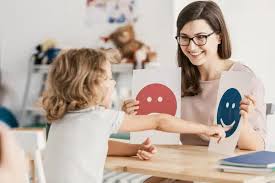

Teaching emotions to young children: tips and tricks!
Teaching emotions to young children is a vital part of early childhood development, as it helps them understand themselves and relate to others. Young children often feel big emotions but don’t yet have the words or tools to express them appropriately. The first step in teaching emotions is helping kids recognize and name what they’re feeling. Using emotion cards, mirrors, and books with expressive characters can help children learn to identify basic feelings like happy, sad, angry, or scared.
Modeling emotional awareness is one of the most powerful teaching tools. When caregivers and educators talk openly about their own emotions—saying things like “I’m feeling frustrated because we’re running late”—they show children that emotions are normal and manageable. Labeling children’s feelings for them, such as “You look really excited about your drawing!” also reinforces their emotional vocabulary.
Play-based strategies work wonders for emotional learning. Role-playing, puppets, and emotion-based games let children safely explore different scenarios and responses. You can create an “emotion corner” with cozy items and calming tools where kids can go to regulate when they feel overwhelmed. Teaching simple calming techniques like deep breathing or squeezing a stress ball empowers children to manage their feelings in healthy ways.
Consistent routines and clear expectations also support emotional development by helping children feel secure and confident. Praise their efforts to express feelings with words, and gently guide them when they act out. Over time, with patience and encouragement, young children learn that emotions are something they can understand, talk about, and handle—skills that serve them for life.




 click and follow Indiaherald WhatsApp channel
click and follow Indiaherald WhatsApp channel